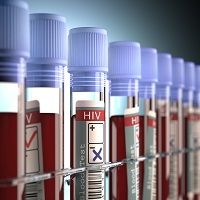Article
Where to Target HIV Prevention and Care to Reach MSM
Author(s):
HIV infection is hyperendemic among MSM throughout many areas of the US, specifically in the South.

A study authored by researchers at Emory University’s Rollins School of Public Health, estimated human immunodeficiency virus (HIV) prevalence rates among men who have sex with men (MSM) at local levels, highlighting areas where gay and bisexual men are at the greatest risk for infection.
The burden of HIV is disproportionately high for MSM and accounts for two-thirds of all new diagnoses each year.
The study which looked at national, state, metropolitan statistical areas and county levels, will allow health departments and community-based organizations to provide HIV prevention and care resources to MSM who need it most.
According to the report, HIV prevalence among MSM in 2012 was 15%, although rates varied by geographic area.
The results indicated 6 states where more than 15% of MSM were living with diagnosed HIV infection in 2012, all of which were in the South. States in the South also had the highest rates of diagnosed HIV prevalence among MSM.
Of the 25 metropolitan statistical areas (MSAs) with the highest levels of MSM living with an HIV diagnosis, 21 were located in southern states and in 2012, at least 1/4 MSM were diagnosed with HIV in Jackson, Miss., Columbia, S.C., El Paso, Texas, Augusta, Ga., and Baton Rouge, La.
The study obtained the 2012 number of MSM living with HIV infections, those living with an HIV diagnosis in 2012, and those newly diagnosed with HIV in 2013 at state, MSA and county levels from publicly available data from AIDSVu.org and the US Centers for Disease Control and Prevention (CDC).
The estimated number of MSM living in every county was calculated using recently published methodology that utilized data from the National Health and Nutrition Examination Survey and American Community Survey. Estimated county-level MSM counts were aggregated to form MSA and state-level totals. Researchers then estimated HIV prevalence, diagnosed prevalence and new diagnosis rates.
The estimated HIV prevalence among MSM in the US in 2012 was 15%, while the diagnosed HIV prevalence in 2012 was 11.1%, and the new diagnosis rate for 2013 was .7 per 100 MSM. The diagnosed HIV prevalence rate among MSM was 57.5 times greater than among other US men.
Despite achievements in prevention, HIV diagnosis and antiretroviral therapies throughout the years, the impact of HIV in US communities of MSM remains staggering. Although there are important local variations in HIV prevalence, the HIV prevalence among MSM is consistently higher than among other Americans. While the prevalence of HIV cases are expressed in cases per 100,000 persons, for MSM, cases are reported per 100 persons.
HIV infection is hyperendemic among MSM throughout many areas of the US, specifically in the South. The concentrations of new diagnoses in the South may represent relative increases in new transmissions or could represent previous success in reducing HIV transmissions among MSM outside of the South.
The study data emphasizes the priorities for HIV prevention and care. There is a need for increased resources for HIV prevention, treatment and care for MSM, which must include expansion of access to healthcare, increased access to comprehensive HIV prevention services including for pre-exposure prophylaxis (PrEP), and increased resources for programs to support immediate referrals for antiretroviral therapy for those newly diagnosed. Despite the impact of HIV in the South, PrEP uptake among MSM is lower than any other geographic area.
The study, “Rates of Prevalent HIV Infection, Prevalent Diagnoses, and New Diagnoses Among Men Who Have Sex With Men in US States, Metropolitan Statistical Areas, and Counties, 2012-2013” is published in JMIR Public Health and Surveillance.





